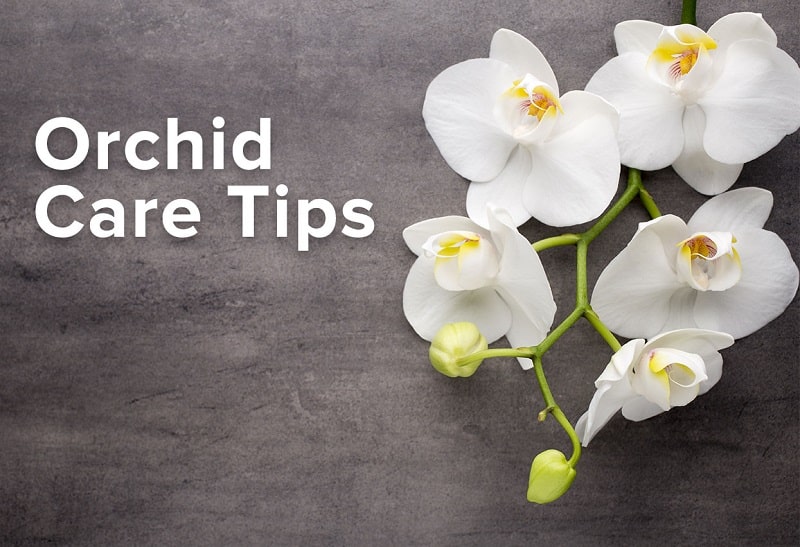Orchids are the type of houseplant that you can easily maintain in order to grow and to bloom at the right time. From the 30,000 and more species of Orchid flower available in the world today, you can find one or two or more species to keep and grow at home.
Orchids are not difficult to care for. They only require minimal amount of water and plant food and the right light, temperature, and humidity. In no time at all, your orchids will bloom into beautiful blossoms. How do you maintain your orchids to bloom and to live longer? Here are a few tips:
Potting Mix Choice
Choose the right potting mix that is suitable to the type of orchids and fit to your style of growing and caring for your plants. If you want to water less frequently, your orchids can go well in moss and in fine grade fir barks. If you want to water more frequently, go for charcoal and large chunks of trees and barks. Watering is dependent on the type of orchids and on the potting mix used.
Indirect and Filtered Light
Another way to maintain the health of the orchids is to keep them under indirect sunlight. You can place the plants in windowsill facing the east or north or under artificial light. If orchid plants are planted outside, in the garden or backyard, make sure that they are protected by shades. On the other hand, there are varieties of Orchids that love dim light or low light
Proper Watering
Orchids need minimal water, however, knowing the conditions of your plant will signal you if it needs more water. You can water your orchids less frequently if temperature is low and humidity level is high. On the other hand, you can increase watering if it is too hot or it the humidity level is low. If you are not available to water the plant for two weeks or more, leave a humidity tray under the plants. The humidity tray will provide the moisture that your plants need even without watering. The general rule in Orchid care is to water the plant one day before the potting medium becomes dry or too dry.
Fertilizers and Plant Food
Water soluble fertilizer and plant food is the right choice for the Orchids. There are fertilizers specially formulated for Orchid varieties. According to the experts, Orchids need regular supply of nutrition, and they can never get them from water and light but from the fertilizers you feed them. To keep them well-fed, you can give a balance of 20-20-20 once a month. When you feed the plant, avoid watering it for a week or two.
Humidity and Mist
Orchids, to grow well in your home and office, require a humid environment. It does not have to be like the rain forest environment but one that will keep the orchid plants moist is just perfect. If the atmosphere in your house is dry or if the air-conditioning system keeps the plants dry, you can mist the plants daily. A humidity tray is very efficient in keeping humidity at such an ideal level for the orchids.
Right Temperature
To maintain the Orchids and keep them healthy, you have to make sure that the area or location where the plants are kept is at the right temperature. Most Orchid plants want the warmth but they also bloom their best when it is cold. In addition, high temperature may wilt the plants. The ideal temperature should 55°F to 65°F.
Quality Aeration
Orchids love the quality aeration. The roots prefer good air quality in order to grow and develop well into a healthier plant and produce more blooms beautifully. The roots absorb their needed oxygen if there is enough air.
Pruning
The spikes and roots, as well as the stems and leaves, may need proper pruning from time to time. This is to keep the plant healthy and protected against infections and diseases. After blooming, the spikes should be pruned or cut at the base to allow new growth of spikes to bloom. If old spikes and roots are not pruned just at the right time, they will consume the energy that the plant needs to produce new growths and new blooms. On the other hand, there is a proper way of cutting and pruning the plant. Make sure to follow the guidelines when you do the procedures to avoid hurting the plant.
Repotting
Orchids need to be repotted if roots have grown bigger and new roots continue to come out. To repot, you should choose a larger one. This is also the right time to remove old and black roots to prevent from decomposing in the pot and spread bacteria to the entire plant. If possible, when repotting use new potting media to keep the plants sanitized and clean. According to the experts, repotting can be done at least once after every two years, however, if roots are growing larger and they seem to outgrow the old pot, you may opt to transfer them to a larger one, provided that the plant is not in its blooming stage.
Maintaining the Orchid plants does not have to be complicated. You just have to focus on what your plants want and let them grow healthier in the environment ideal for them. Soon enough you will reap the reward of your hard work when the plants you cared for start to bloom.
